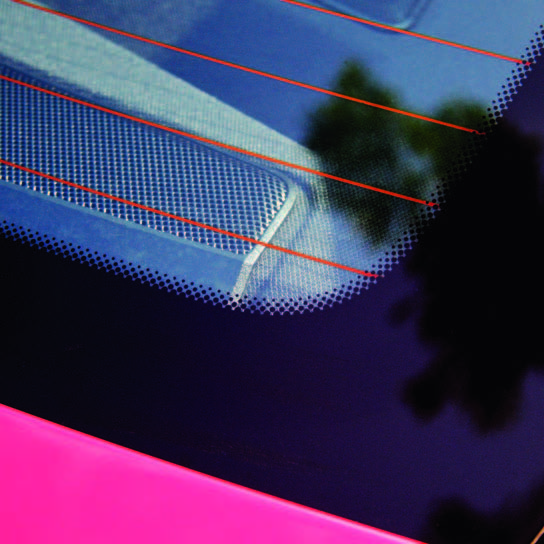- Home >
- Glass & Ceramics >
Choosing the Right Materials for Screen Printing on Glass & Ceramic
Screen printing on glass continues to play a significant role in the production of glass and ceramic products for industrial and consumer applications. Glass decorators utilize screen printing to overcome challenges including printing on objects of unlimited sizes, 3D objects and uneven surfaces while delivering thick, opaque ink deposits that often contain glass frit/precious metals. In order to overcome these hurdles it’s important to choose the right materials. Use this breakdown of the best ink for screen printing on glass and the right emulsion to produce the highest quality outcome for every situaton.

Overcome Challenges with Glass/Ceramic Decoration
✓ Print on objects of unlimited sizes
✓ Print on 3D objects
✓ Print on uneven surfaces
Industrial Glass applications are functional in nature:
✓ Automotive Glass: black window masks, defrosts, antennas, marking, GPS
✓ Appliance Glass: oven doors, ceramic cook tops
✓ Construction/Architectural Glass: decorative, privacy, UV blocking, mirrors
Glass/Ceramic Decoration improves product appearance and adds value:
✓ Glass containers or bottles: beverages and liquor, cosmetics and perfumes
✓ Production of Ceramic Tiles: mimicking natural stone, decorative patterns
✓ Tableware: plates, glassware, mugs
The Right Emulsion for your Application
Glass and ceramic screen printing inks are classified into Organic and Inorganic inks.
Organic inks: Two-part Inks and UV Inks
– UV inks cure rapidly, multiple colors possible (halftones)
– Typically less durable, not preferred for extreme abrasion or chemical resistance
Inorganic/Ceramic inks: Glazes and Thermoplastic Inks
– Contains pigments, glass frit, or metallic particles (for conductive applications)
– Requires high temperature “firing” to fuse them to the glass/ceramic surface
– Very durable, excellent abrasion and chemical resistance
Both organic and inorganic inks can be printed directly on the substrate, or applied to the substrate later using transfer decals. Use the table (right) to select the appropriate Chromaline emulsion for your glass or ceramic application.
Glass & Ceramic Emulsion Selection Chart
| Ink | Application | Type | Direct Emulsion | Capillary Film |
| Organic Inks | ||||
| Two-part | For use with indoor decoration of glass and ceramics (glass panes, bottles, tiles) | Solvent | UDC-2 Dual-Cure UDC-ACE Dual-cure* Razor® Fusion Photopolymer* DTS Z1 Photopolymer* |
Pro/Cap Diazo Pro/Cap TD Diazo Magna/Cure® Dual-Cure Razor® Photopolymer* |
| UV | For use with flat glass for indoors, cold-end coated packaging glass (drinking bottles), cosmetic bottles, restaurant glass (drinking glasses, ashtrays, vases) | UV | UDC-2 Dual-Cure UDC-ACE Dual-cure* Razor® Fusion Photopolymer* DTS Z1 Photopolymer* |
Pro/Cap Diazo Pro/Cap TD Diazo Magna/Cure® Dual-Cure Razor® Photopolymer* |
| Inorganic Inks | ||||
| Glazes/Ceramic Inks | For printing on single/multi-trip bottles, cosmetic/perfume bottles, tumblers/tableware, borosilicate glass (laboratory and cooking glass) | Solvent or Thermo-plastic | UDC-2 Dual-Cure MAX-R Dual-Cure |
|
| Silver Paste | Automotive heated rear windows, antennas, wiper heating, ceramic cook tops | Solvent | UDC-2 Dual-Cure UDC-ACE Dual-cure* MAX-R Dual-Cure |
Pro/Cap Diazo Magna/Cure® Dual-Cure |
*Recommended for high-resolution Images
Download PDF version of this chart
